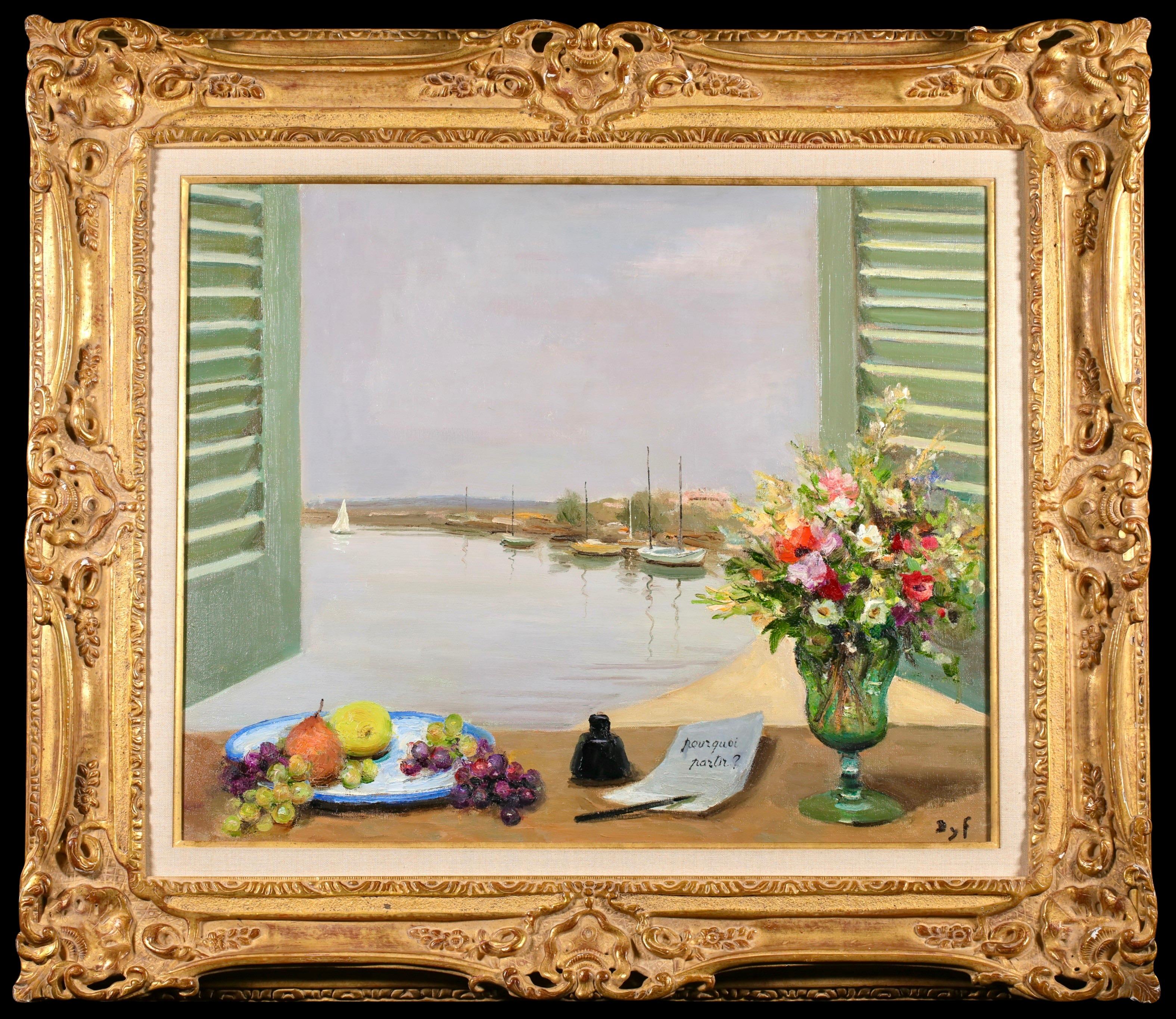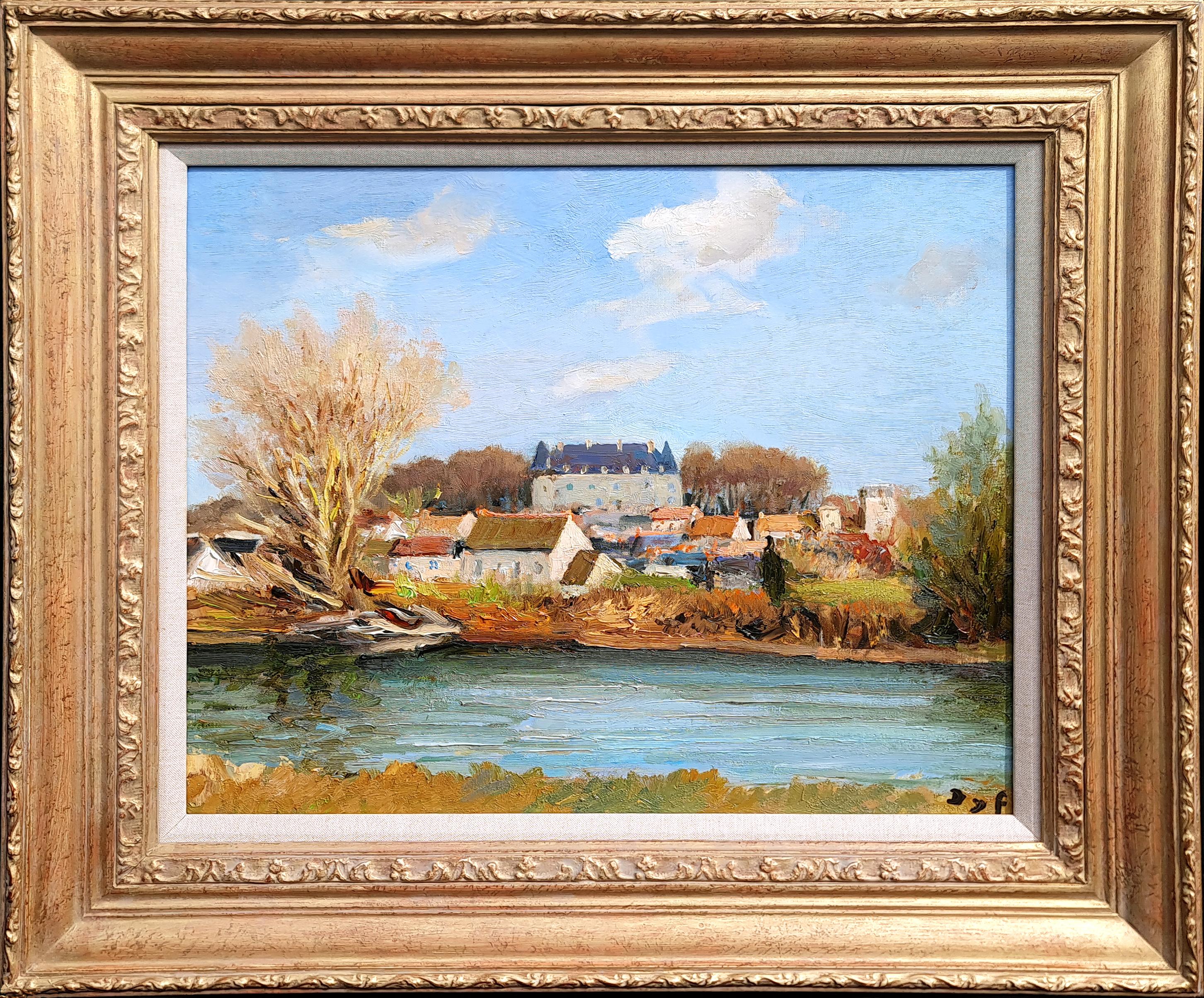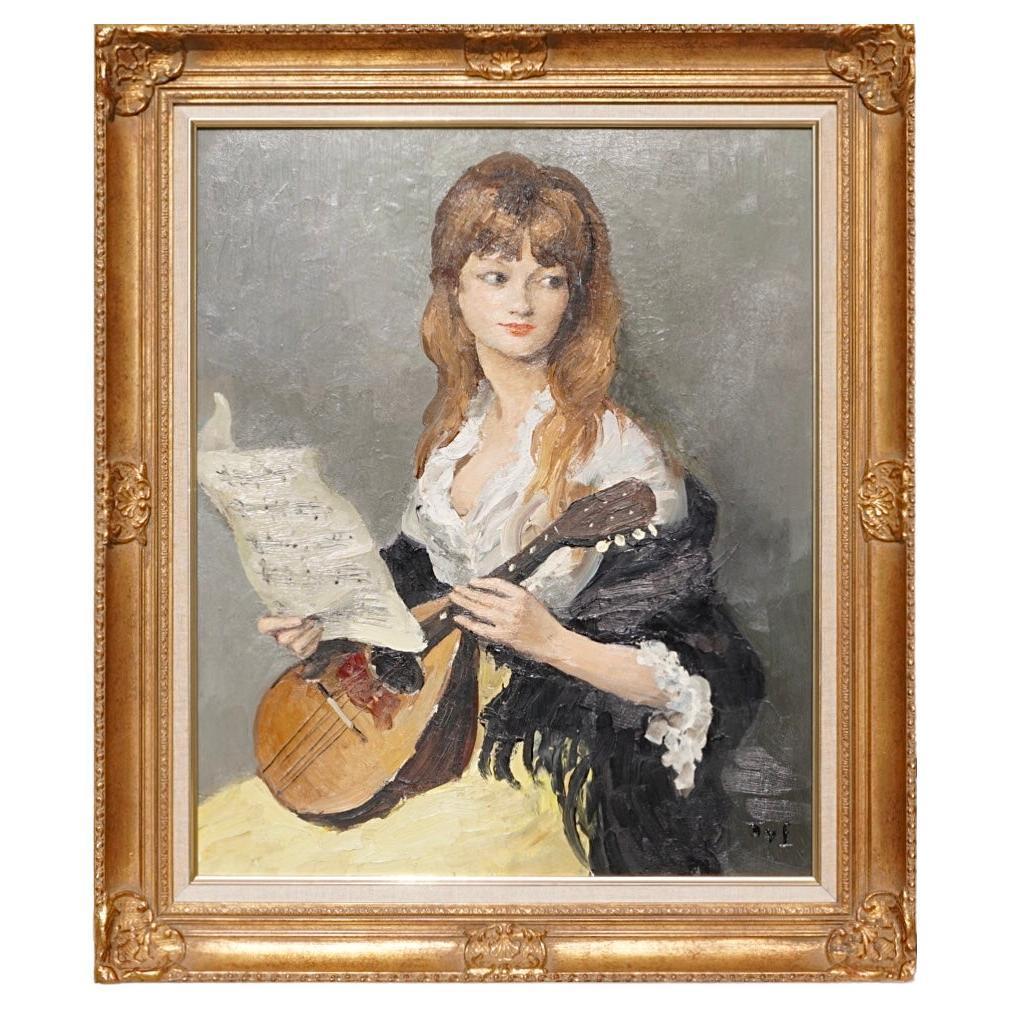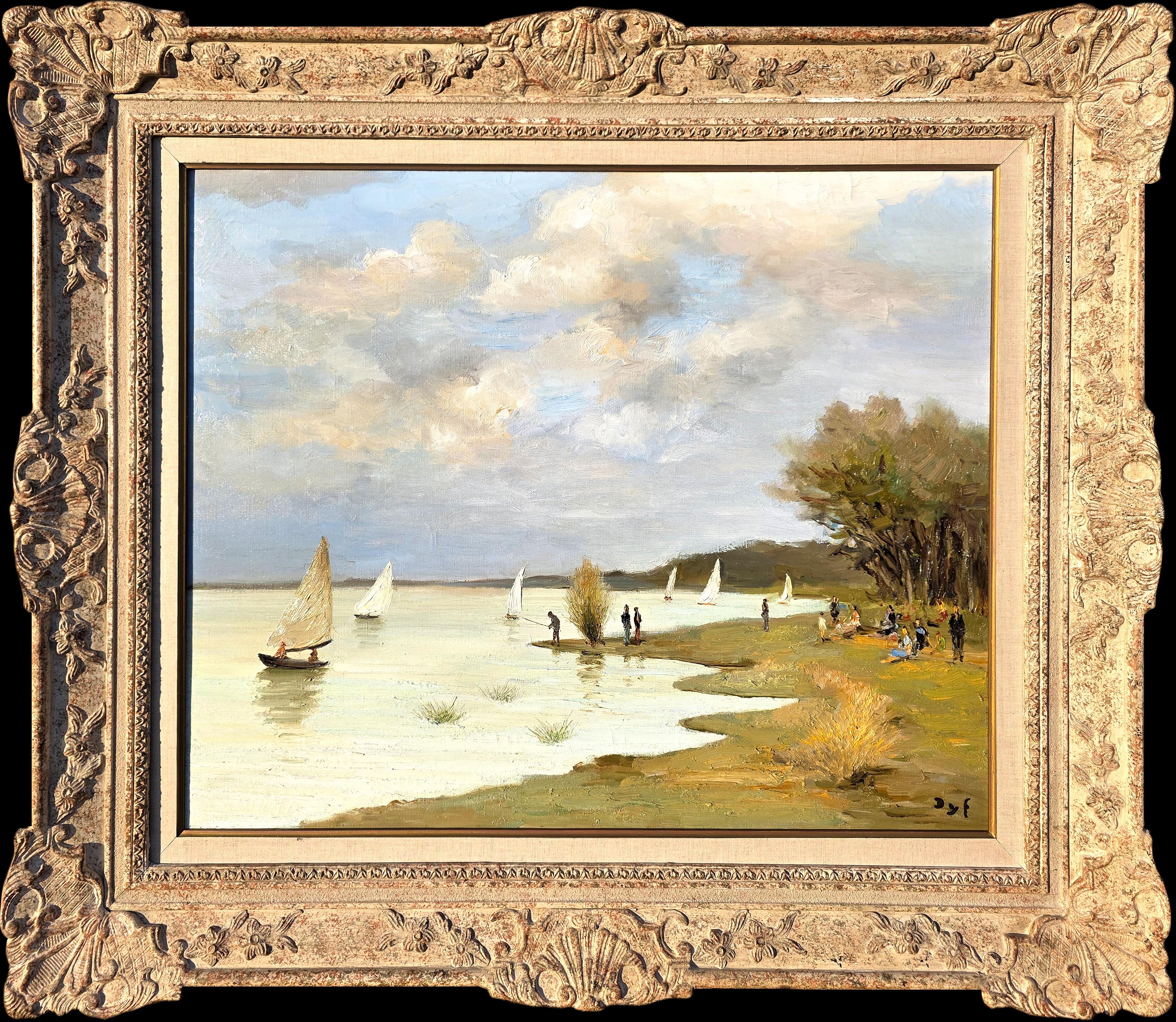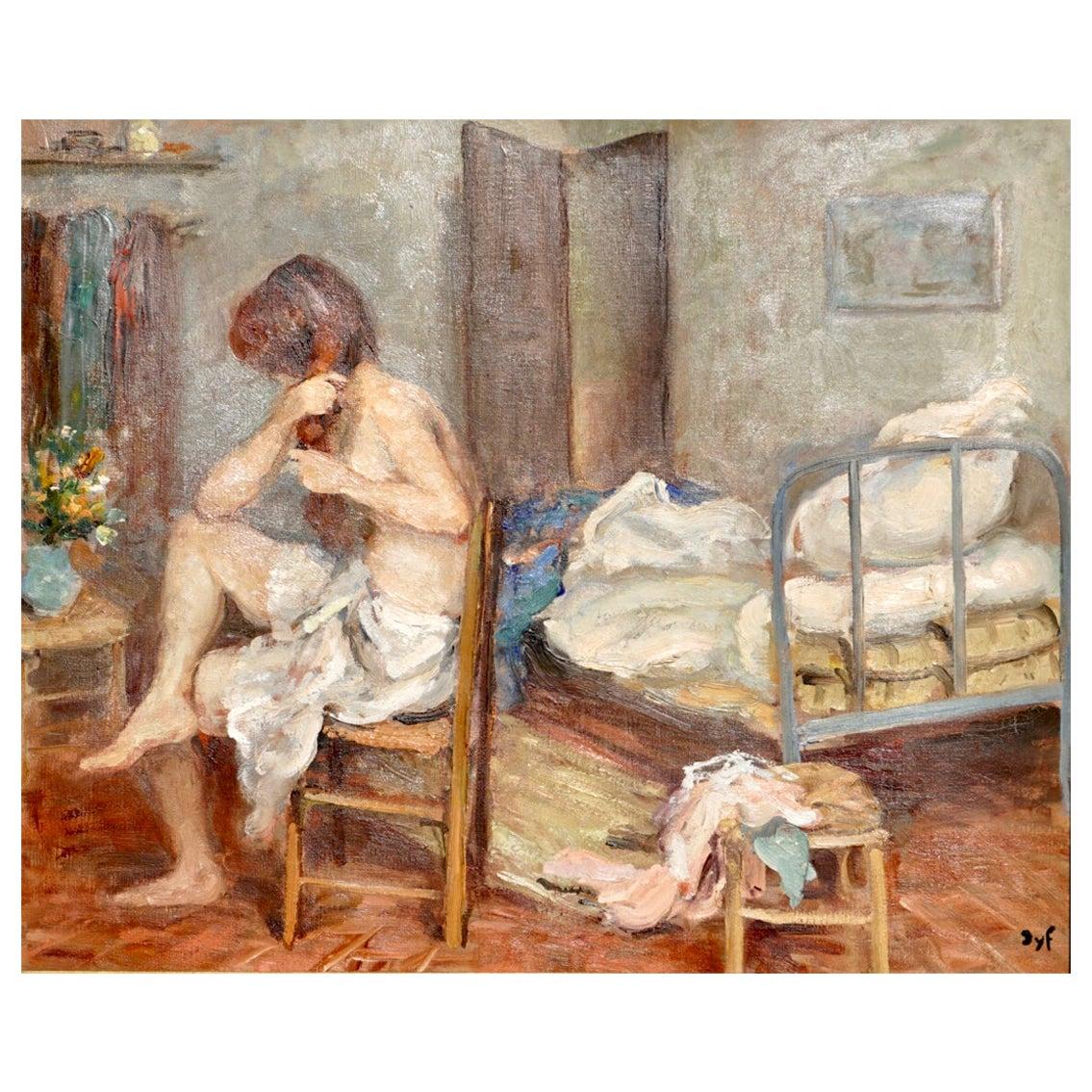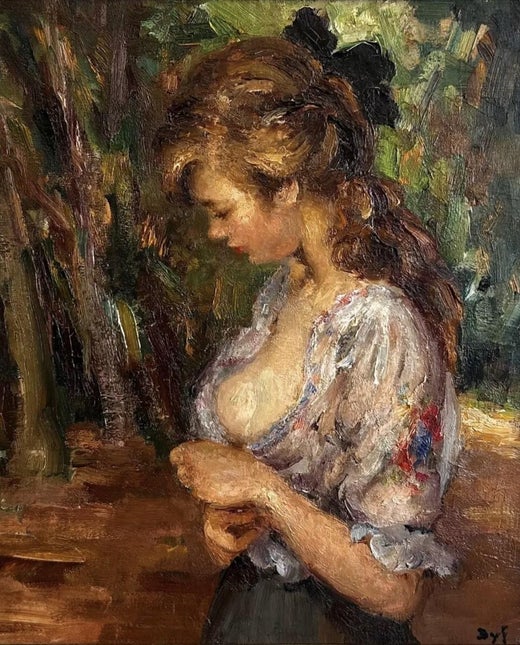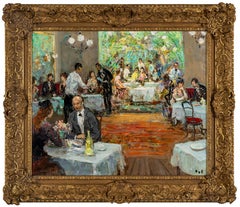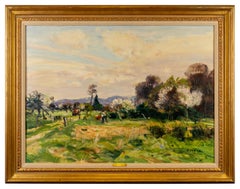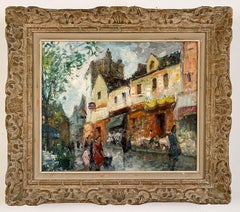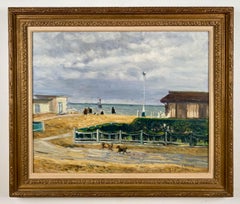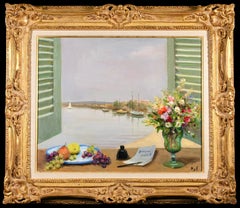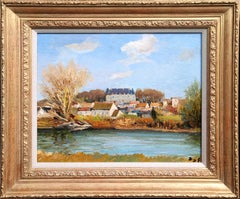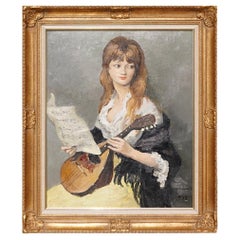Marcel DyfDjeuner Champtre1950's
1950's
About the Item
- Creator:Marcel Dyf (1899-1985, French)
- Creation Year:1950's
- Dimensions:Height: 31.5 in (80.01 cm)Width: 36.75 in (93.35 cm)Depth: 3 in (7.62 cm)
- Medium:
- Movement & Style:
- Period:
- Condition:
- Gallery Location:Sheffield, MA
- Reference Number:Seller: Art D2491stDibs: LU70036268661
Marcel Dyf
Known for his pastoral landscapes, still-life paintings of flower bouquets, and portraits — notably of his wife, Claudine — French painter Marcel Dyf is widely regarded as one of the last of the true Impressionists. His mastery of composition and use of soft colors influenced many artists, setting the standard for 20th-century Post-Impressionism.
Dyf was born Marcel Dreyfus in 1899 in Paris. As a child, he displayed artistic talent but briefly considered a career as an engineer before becoming a professional painter at 23, influenced by the likes of Pierre-Auguste Renoir, Rembrandt van Rijn and Johannes Vermeer.
In 1922, Dyf set up a studio in Arles and initially painted landscapes, capturing scenes of the surrounding countryside in oil on canvas. He produced many landscapes depicting Provence, Brittany, Normandy and locales further afield such as Venice, Morocco and Israel.
It wasn’t long before Dyf’s works caught the eye of art dealers and collectors, and he was urged to exhibit in Paris at the Salon des Artistes Français, the Salon d’Automne and the Tuileries.
In 1935, he moved from Arles to Paris and, at the outbreak of World War II, joined the French Resistance. Following the war, during the 1950s, he met 19-year-old model Claudine Godat, who — despite their 36-year age difference — became his wife, muse and subject for many of his most well-known portraits. These include Claudine Songeuse, Claudine and the Red Rose and Claudine with Flowers.
Over the course of his career, Dyf created a substantial body of work — he made landscape paintings, portraits and figurative works. He also painted frescoes in the Museon Arlaten in Arles and produced decorative pieces in the town halls of Saintes-Maries-de-la-Mer and St-Martin-de-Crau.
Following his death in 1985, Dyf’s paintings continued to be featured in numerous exhibitions. The General Council of Bouches-du-Rhône staged a retrospective of his early works in 1995. Four years later, a show that marked what would have been his 100th birthday was held at the L’Espace Dyf in Bois-d’Arcy.
Today, Dyf’s paintings and prints are highly sought by dealers and collectors of Impressionist and Post-Impressionist art.
Find original Marcel Dyf paintings and wall decorations on 1stDibs.
- ShippingRetrieving quote...Shipping from: Sheffield, MA
- Return Policy
More From This Seller
View AllMid-20th Century Expressionist Interior Paintings
Oil
Late 20th Century Impressionist Landscape Paintings
Oil
1940s Post-Impressionist Landscape Paintings
Oil
1960s Post-Impressionist Landscape Paintings
Oil
Late 20th Century Impressionist Landscape Paintings
Oil
Late 20th Century Impressionist Landscape Paintings
Oil
You May Also Like
1980s Post-Impressionist Landscape Paintings
Canvas, Oil
20th Century Impressionist Landscape Paintings
Canvas, Oil
1960s Figurative Paintings
Paint
20th Century Impressionist Landscape Paintings
Canvas, Oil
1950s Paintings
Paint
Mid-20th Century Post-Impressionist Still-life Paintings
Canvas, Oil

